Chopra Eyes Golden Finish at Golden Spike Meet
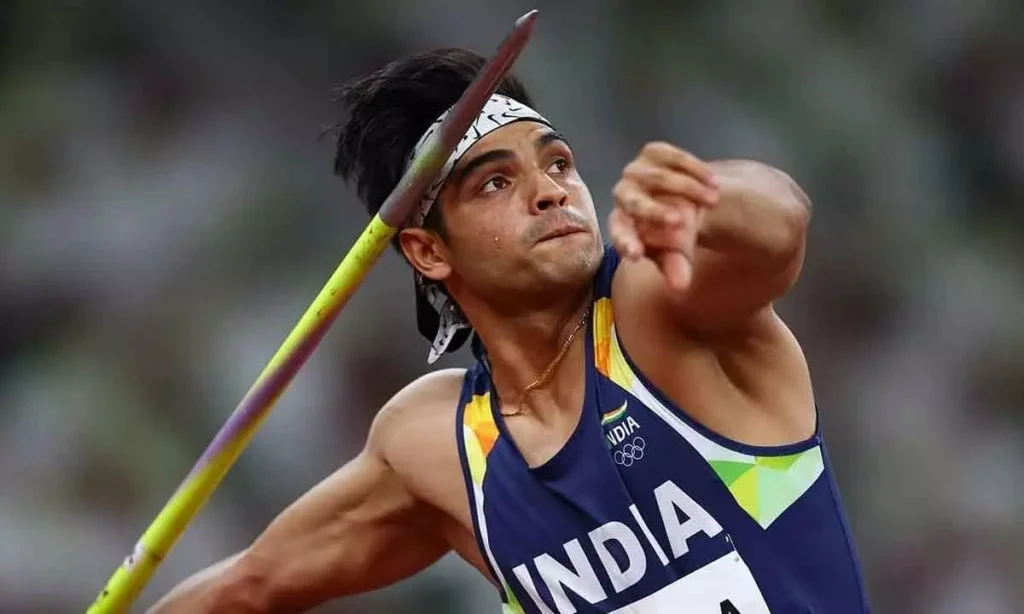
Neeraj Chopra Ready to Debut at Prestigious Ostrava Event India’s javelin throw sensation Neeraj Chopra is set to make his long-awaited debut at the Golden Spike Athletics Meet in Ostrava, Czech Republic, on Tuesday. The meet is part of the World Athletics Continental Tour – Category A, and one of Europe’s most historic track and field events. Chopra, 27, had previously planned to participate in the 2023 and 2024 editions but was forced to withdraw both times due to fitness issues. This year, the reigning Olympic champion is in top form and eager to add another international title to his name. His participation marks a special occasion not only for Indian athletics fans but also for the meet itself, which has witnessed some of the most iconic moments in the sport’s history. Coach Jan Zelezny’s Special Connection to the Golden Spike The Golden Spike Meet holds a special place in javelin lore thanks to Jan Zelezny, Neeraj’s coach and one of the greatest javelin throwers in history. Zelezny, a three-time Olympic gold medallist, won this event a record nine times during his career. It was on these very fields in Ostrava that Zelezny built a part of his legendary status, and now, Chopra is hoping to follow in his mentor’s footsteps. Speaking ahead of the event, Chopra expressed his admiration for the meet and his excitement about finally being able to compete. “It’s a great honor to compete where legends have made history. Ostrava is special to me not just because of the competition, but because of Jan sir’s legacy here,” he said. Fitness Troubles Finally Behind Him Chopra had to skip the Golden Spike Meet in both 2023 and 2024. In 2023, a training-related strain ruled him out of the competition. In 2024, although he was present at the event as a guest, he opted not to compete due to a niggle in his adductor muscle—a minor but recurring issue that has occasionally interrupted his otherwise stellar career. Now fully recovered, Chopra has trained extensively under Zelezny and his support team in Europe. His recent performances indicate that he is nearing peak form just as the global athletics season intensifies ahead of the Paris Olympics 2024. Outstanding 2025 Season So Far Neeraj’s 2025 campaign has been nothing short of outstanding. He started his season strong with a second-place finish at the Doha Diamond League, throwing a massive 90.14 meters, breaking the elusive 90-meter barrier that had long eluded him in official competition. Though he came second, it was a personal milestone and a significant psychological boost. Later, in Paris, Chopra clinched his first Diamond League title in two years, reaffirming his status as one of the world’s top javelin throwers. These performances have silenced critics and reinforced his Olympic medal prospects. Eyes on the Podium in Ostrava The Golden Spike meet will serve as a critical test before the Olympics. Chopra is expected to face strong competition from a field that includes world-class throwers like Jakub Vadlejch (Czech Republic) and Julian Weber (Germany). Both athletes are medal contenders themselves and have consistently challenged Chopra at major international events. Despite the stiff competition, Chopra remains focused on executing his technique and sticking to the game plan. “I don’t want to put too much pressure on myself. The goal is to stay consistent and injury-free. If I get my rhythm right, the big throws will come,” he told reporters during a pre-event press conference. Zelezny’s Mentorship a Game-Changer The influence of Jan Zelezny on Chopra’s career cannot be overstated. Since linking up with Zelezny and his team, Chopra has shown marked improvement in his throwing technique, physical conditioning, and mental preparation. Zelezny’s insights, drawn from decades of elite-level experience, have helped Chopra elevate his training intensity and execution. Zelezny believes Chopra has what it takes to dominate the world stage for years to come. “Neeraj is a special talent. What he needs now is consistency and proper planning. Ostrava will be a great stepping stone toward Paris,” Zelezny said. Building Toward the Paris Olympics With less than two months to go before the 2024 Paris Olympics, every competition now holds extra weight. For Chopra, the Golden Spike meet is more than just another title; it’s a crucial checkpoint in his Olympic build-up. Winning or even delivering a high-90m throw here could solidify his mental and physical preparedness for the biggest stage in sports. India’s athletics community is watching closely, with expectations running high. Chopra’s gold medal in Tokyo 2021 ignited a wave of interest in track and field in India, and another Olympic medal could turn that spark into a lasting flame.
IND vs ENG 1st Test Day 3 Live: Jasprit Bumrah Leads the Fightback as India Seeks Support from Pacers

India vs England: A Rivalry Steeped in History The fierce and time-honored rivalry between India and England has resumed with full intensity as both sides battle it out in the opening Test of the five-match series. The ongoing contest at Headingley, Leeds, has already lived up to the billing, showcasing top-class cricket, tactical brilliance, and individual brilliance on both ends. As Day 3 gets underway, the tension is palpable, with India looking to bounce back after a challenging outing on Day 2. Day 2 Recap: England Seizes the Initiative England had a dominant Day 2 after putting India under pressure with both bat and ball. Riding on a solid top-order performance, the hosts managed to build a sizeable lead. Joe Root’s composed innings and a brisk knock from Ben Stokes pushed India on the back foot. The Indian bowling attack, which looked sharp in patches, struggled to maintain consistency on a surface that started offering uneven bounce. India’s fielding also came under scrutiny as a couple of missed chances allowed England to gain the upper hand. Despite these setbacks, captain Jasprit Bumrah remained committed and vocal, motivating his troops in the huddle and pushing for breakthroughs with aggressive field settings. Jasprit Bumrah’s Leadership Tested Under Pressure The third day now offers Bumrah and India’s bowlers a chance to wrestle back control. Known for his ability to deliver in crunch situations, Bumrah is expected to lead from the front again. His spell late on Day 2 showed glimpses of his fiery best — toe-crushing yorkers, subtle seam movement, and calculated aggression. However, Bumrah cannot do it alone. With a workload that has been consistently heavy across formats, he is seeking significant support from his pace partners — Mohammed Siraj, Mukesh Kumar, and all-rounder Shardul Thakur. Their contributions could be the difference between containing England’s lead and allowing them to run away with the game. Pace Attack in Focus: Siraj and Mukesh Need to Step Up Mohammed Siraj, who has shown promise in overseas conditions in the past, will be under the spotlight. His pace and reverse swing can be assets if harnessed correctly, especially with the ball showing signs of wear. On the other hand, Mukesh Kumar, still new to Test cricket at this level, has an opportunity to make his mark by supporting the bowling unit with control and accuracy. India’s team management will be hoping for early wickets on Day 3 to keep England’s score in check. If the pacers can strike early and expose the tail, India could still claw their way back into the match. Ashwin’s Role and Spin Option Strategy Though the pitch is currently favoring pacers, Ravichandran Ashwin’s experience cannot be discounted. His ability to bowl with variations and extract bounce could come into play as the pitch deteriorates. On a wearing Leeds surface, Ashwin’s subtle changes in pace and angle might prove useful, particularly against England’s lower middle order. The decision to play Ashwin over another fast bowler may become a talking point depending on how Day 3 unfolds. India’s Batting Concerns Loom Large Apart from their bowling response, India’s batting lineup will also need to regroup mentally for the second innings. The likes of Rohit Sharma, Shubman Gill, and Virat Kohli will have to play crucial roles in setting up a competitive total if India is to stage a comeback. India’s middle order has shown resilience in the past, but a lot depends on how well they can absorb pressure and counter England’s pace threat led by James Anderson and Ollie Robinson. Pitch and Weather Conditions: A Crucial Factor The weather forecast for Day 3 at Leeds remains mostly clear, offering uninterrupted play throughout the day. However, with overcast conditions expected in the first session, the new ball could swing more. This makes the morning session critical for both teams — England will look to accelerate while India will hope to exploit the moisture with their pace attack.
5 Indians With Most Centuries Before Turning 25: Shubman Gill Joins Elite List With 15th Ton
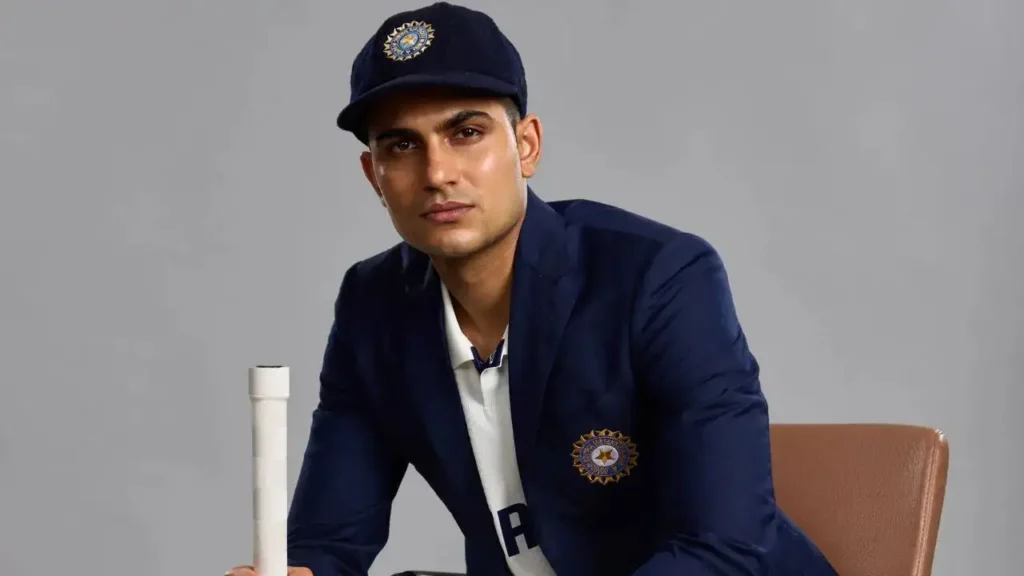
Indian cricket has seen several young prodigies rise to fame at an early age. From Sachin Tendulkar’s historic debut at 16 to the recent rise of Shubman Gill, the country’s cricketing future has often rested on young shoulders. One key benchmark to assess their impact early on is the number of international centuries scored before turning 25. Shubman Gill, one of the brightest stars of the current generation, recently achieved a significant milestone by scoring his 15th international century. Here’s a closer look at Gill’s achievement and the elite company he now shares. Shubman Gill Hits 15th International Century in Leeds Shubman Gill reached the 15-century milestone during the first Test match against England at Headingley, Leeds. This was a significant moment in his career, not only for the century but also because it marked his debut as India’s Test captain. Gill replaced Rohit Sharma as skipper for the series opener, becoming one of the youngest Indians to lead the national side in the longest format of the game. Batting with composure and class, Gill’s innings demonstrated why he is touted as the future of Indian cricket. His elegant drives, solid defense, and quick footwork stood out on a testing English pitch. The century marked his continued growth across all formats and solidified his place among India’s top batters under the age of 25. 1. Sachin Tendulkar – 40 Centuries Before 25 Topping the list is none other than the Master Blaster, Sachin Tendulkar. He made his international debut in 1989 at the age of just 16, and by the time he turned 25, he had already amassed 40 international centuries — a truly staggering achievement. Format Breakdown: 22 in ODIs, 18 in Tests Total Matches: 309 innings Debut Year: 1989 Notable Feat: Youngest Indian to debut in international cricket Tendulkar’s early years were defined by his consistency, temperament, and ability to perform under pressure. From his maiden Test hundred at Old Trafford to dominating world-class attacks in Sharjah, Tendulkar set a high benchmark for all young cricketers. 2. Virat Kohli – 25 Centuries Before 25 Before becoming the modern-day run machine, Virat Kohli made waves as a youngster with a flair for chasing big targets. By the age of 25, Kohli had registered 25 international centuries, making him one of India’s most promising batters. Format Breakdown: 17 in ODIs, 8 in Tests Debut Year: 2008 Milestone Year: 2013 Known for his aggressive intent, unmatched fitness, and hunger for runs, Kohli’s rise was rapid. His 133* against Sri Lanka in Hobart and his hundreds in the 2012 Australia tour were highlights of his pre-25 exploits. 3. Shubman Gill – 15 Centuries Before 25 Shubman Gill, born in 1999, has become the latest Indian to make headlines with his 15th international century before turning 25. His centuries span all three formats, with a growing reputation for anchoring innings and converting starts into big scores. Format Breakdown: 5 in Tests, 7 in ODIs, 3 in T20Is Debut Year: 2019 Leadership Milestone: Test captaincy debut in 2025 Gill’s ability to play across formats with equal ease makes him a key player in India’s future plans. His double century in ODIs and a T20I ton against New Zealand showcased his versatility and class. 4. Virender Sehwag – 13 Centuries Before 25 Known for his fearless batting and explosive stroke play, Virender Sehwag had already made a name for himself before he turned 25. By that age, he had scored 13 international centuries. Format Breakdown: 7 in Tests, 6 in ODIs Debut Year: 1999 Milestone Year: 2003 Sehwag’s carefree approach often belied his solid technique. His maiden Test ton in South Africa in 2001 and his brutal ODI hundreds against New Zealand and Sri Lanka remain unforgettable. 5. Rohit Sharma – 12 Centuries Before 25 Current Indian skipper Rohit Sharma had a relatively slower start to his international career but still managed to notch 12 centuries before hitting 25. Format Breakdown: Mostly ODIs Debut Year: 2007 Milestone Year: 2012 Though he was in and out of the team during his early years, Rohit’s talent was never in question. His defining moment came later in his career, but his early centuries laid the groundwork for what would become a legendary white-ball career. A Generation of Talented Batsmen India’s batting legacy is rich and constantly evolving. The players mentioned above have all carried the expectations of a cricket-obsessed nation from a young age. Shubman Gill’s inclusion in this elite list at such a young age is a testament to his talent, work ethic, and potential. As Gill continues to develop and lead, Indian fans have every reason to believe that he may even surpass the benchmarks set by the legends before him.
Caitlin Clark Involved in Heated On-Court Altercation with Jacy Sheldon and Marina Mabrey
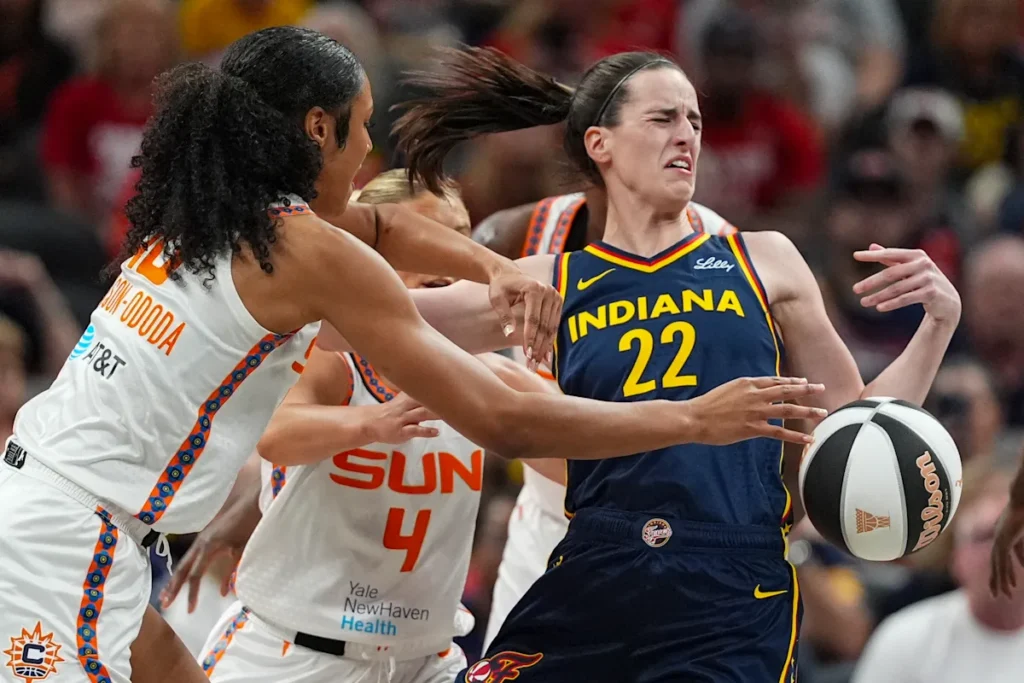
A Rivalry Renewed: Caitlin Clark vs. Jacy Sheldon Caitlin Clark and Jacy Sheldon, two former college rivals now facing off in the WNBA, found themselves at the center of drama during Tuesday night’s physical matchup between the Indiana Fever and the Connecticut Sun. The tension between the players had been brewing since their college days, but it escalated to a new level when Sheldon appeared to poke Clark in the eye during a possession that ignited emotions on both sides. This altercation not only reignited old hostilities but also sparked a broader confrontation involving other players, including Marina Mabrey, turning the game into a tense and heated affair. Eye-Poke Sparks Tensions The incident occurred midway through the third quarter, with the Indiana Fever holding a 55-45 lead. As Clark brought the ball up the court, she was closely guarded by Sheldon. In a split-second moment, Sheldon’s hand made contact with Clark’s face, appearing to jab her in the eye. Clark immediately reacted, wincing and grabbing her face, clearly in discomfort. Though no foul was called initially, the play did not go unnoticed. Fever players came to Clark’s defense, and tensions flared. Marina Mabrey Escalates the Situation The situation intensified when Marina Mabrey, known for her aggressive play, got involved. She confronted Sheldon and appeared to shove Clark, either unintentionally or in the chaos of the scuffle. This further escalated emotions, leading to a brief bench-clearing moment as players from both teams converged at center court. Officials stepped in quickly to break up the confrontation before it could spiral further out of control. The referees reviewed the footage, issued warnings, and play resumed under a tense atmosphere. Clark’s Composure Amid Chaos Despite the physicality and the confrontation, Caitlin Clark remained composed. She returned to the floor after being checked by team trainers and continued playing with her usual intensity. Clark, who has become a polarizing figure in the WNBA due to her high-profile college career and transition into the pro league, has faced similar challenges in earlier games but has consistently demonstrated resilience. Her response after the eye-poke—staying calm and avoiding retaliatory behavior—showed a level of maturity that was appreciated by fans and commentators alike. Past College Rivalry Resurfaces The on-court rivalry between Clark and Sheldon dates back to their days in the Big Ten Conference, where Clark played for Iowa and Sheldon starred for Ohio State. Their matchups were always intense and often personal, marked by fierce competition and fiery exchanges. Tuesday’s clash brought that history to the forefront. What may have started as a competitive physical play quickly turned personal, reflecting the lingering edge from their collegiate battles. Team Dynamics: Fever vs. Sun The Indiana Fever, led by Clark, have struggled this season but showed flashes of promise in this matchup. The team came out strong, playing with grit and energy. Clark had been facilitating the offense well, and the Fever built a double-digit lead by the time the incident occurred. On the other side, the Connecticut Sun—known for their physical defense—were trying to wear down the Fever’s tempo. Sheldon, playing her role as a defensive stopper, had been tightly guarding Clark all night, setting the stage for the confrontational moment. Fan and Media Reaction Social media exploded following the incident. Fans of Clark voiced outrage over the eye-poke and called for more protective officiating, arguing that she has been targeted in multiple games this season. Conversely, others viewed the scuffle as a part of the intense competition that defines professional basketball. Analysts noted that while physicality is part of the game, there’s a line that shouldn’t be crossed. The incident sparked renewed debate over how rookies like Clark are treated and whether referees are doing enough to ensure fair play. Post-Game Responses In post-game interviews, Clark acknowledged the physicality of the game but downplayed the incident, stating, “That’s just part of basketball. Things get heated. I’m good.” Sheldon, when asked about the play, denied any malicious intent, saying it was an “accidental contact.” Fever head coach Christie Sides defended her players, calling for better officiating, while Sun coach Stephanie White praised her team’s defensive effort but urged players to stay composed. A Growing Rivalry to Watch As the WNBA season progresses, the Clark-Sheldon rivalry may become one of the league’s most compelling storylines. With both players young and central to their respective teams, future matchups promise more intense, competitive basketball—and potentially more drama. For fans, Tuesday night’s game was a reminder of the passion, skill, and emotion that make the WNBA increasingly captivating. While the eye-poke and the scuffle may overshadow some of the actual gameplay, it has undeniably added fuel to a rivalry that could define a new era of women’s professional basketball.
Ksenia Samotiy: From Avoiding Exercise to Embracing a Surprising New Passion

For most of my life, I believed there were two kinds of people in the world: those who were enthusiastic about exercise and those who wanted nothing to do with it. I proudly placed myself in the second category. To me, the word “sport” might as well have been a foreign language—one I had no interest in learning. Physical activity seemed reserved for overly energetic people in Lycra who loved sweating and talking about protein shakes. That wasn’t me. Or so I thought. Why Exercise Was Never My Thing Growing up, gym class was a nightmare. I was the kid who tried to blend into the back row during PE and hoped no one noticed my clumsy attempts at sports. Team games filled me with dread, running felt like punishment, and even yoga seemed too intense. I viewed exercise not as something to enjoy but as something to survive. Over the years, I became more comfortable in a sedentary lifestyle. My hobbies were intellectual or artistic: reading, writing, photography. I was happy indoors and at rest. While I admired fit people from a distance, I never saw myself joining their ranks. The thought of becoming a “gym person” was laughable. The Turning Point: Curiosity and Coincidence But something shifted recently. It wasn’t dramatic—a health scare or sudden desire to transform my body. It started with a simple invitation from a friend who had taken up a new hobby: indoor bouldering. “Just come watch,” she said. I went along more out of politeness than interest. Yet what I saw surprised me. The climbing gym was full of people of all shapes and sizes. They weren’t all ultra-fit adrenaline junkies. Some were beginners like me, trying to figure out where to place their hands or how to hang on for one more second. And they were having fun. My First Climb: Awkward but Empowering My friend eventually coaxed me into trying a beginner route. I struggled, slipped, and felt ridiculously uncoordinated. But somewhere between the fear of falling and the thrill of reaching the top, I felt something unexpected: exhilaration. For the first time in years, my body wasn’t an enemy to be tamed—it was a tool, working with me rather than against me. That evening, I felt sore in muscles I didn’t know existed. But I also felt proud. I had faced a fear and discovered an activity that wasn’t just tolerable—it was actually enjoyable. Redefining What Exercise Means What I learned that day—and in the weeks that followed—was that exercise doesn’t have to mean suffering through a bootcamp or forcing yourself to jog at 6 a.m. It can mean climbing brightly colored walls, solving physical puzzles with your body, and celebrating every small victory. Bouldering introduced me to a community of supportive, nonjudgmental people who focus on progress, not perfection. It made me realize that movement can be playful, creative, and deeply satisfying. Unexpected Benefits Beyond Fitness Since I started climbing, I’ve noticed changes that go beyond the physical. Sure, I’m stronger and more flexible. But more importantly, I feel mentally sharper, emotionally more resilient, and—dare I say it—happier. Climbing requires concentration and presence. There’s no room for overthinking or multitasking when you’re halfway up a wall. It’s become a form of active meditation, a break from the mental noise of everyday life. I’ve also gained confidence in ways I never anticipated. Facing my fears on the wall has helped me face challenges off it. I approach problems with more patience and creativity. And I’ve stopped saying “I can’t” so easily. A Message to the Exercise-Averse If you’ve ever felt like exercise just isn’t your thing, I understand. But I also want to gently challenge that belief. Maybe you haven’t found your movement yet. And maybe, like me, you’ve been conditioned to associate exercise with discomfort, embarrassment, or pressure. But the world of movement is vast. Dance, hiking, swimming, martial arts, pole fitness, roller skating—there are countless ways to move your body, many of which don’t involve gyms or strict routines. Start small. Follow your curiosity. You might surprise yourself. Embracing a New Identity I never thought I’d be the kind of person who looked forward to a workout. But now, I schedule my climbing sessions like I would a coffee date or movie night. It’s become a highlight of my week—something I do not for weight loss or aesthetics, but because it genuinely brings me joy. I still wouldn’t call myself a “sporty” person in the traditional sense. But I’ve come to see that labels don’t matter. What matters is how you feel in your body and what it allows you to experience. Exercise, it turns out, isn’t a chore or a punishment. It can be a passion, a practice, even a kind of play. I’m grateful I gave it a chance.
Mitchell Johnson Criticizes Josh Hazlewood for Prioritizing IPL Over WTC Final
Former Australian fast bowler Mitchell Johnson has taken a strong stand against fellow countryman Josh Hazlewood, criticising his decision to put the Indian Premier League (IPL) ahead of representing Australia in the all-important ICC World Test Championship (WTC) Final. Johnson’s comments have ignited debate in the cricketing world about player priorities, national commitments, and the growing influence of franchise cricket. A Question of Priorities In a recent interview, Johnson expressed disappointment over Hazlewood’s choice to participate in the lucrative IPL 2023 despite nursing an injury and with the WTC Final on the horizon. According to Johnson, Hazlewood’s decision “raised eyebrows” within the Australian cricketing fraternity, as many expected the pacer to focus on recovering fully for the WTC Final — a match that holds significant importance in the Test cricket calendar. “Choosing IPL over the WTC Final doesn’t sit right with a lot of fans, and frankly, with a lot of past players too,” said Johnson. “You’re representing your country in a format that defines legacy — and the final no less — not just another bilateral series.” Hazlewood’s Injury Concerns and Timeline Josh Hazlewood had been managing a side strain and other minor niggles for several months leading up to the IPL. Despite not being fully fit, he joined Royal Challengers Bangalore (RCB) midway through the season. While he played a few matches, his participation further aggravated concerns over his match fitness and workload management. Many believed that Hazlewood’s time would have been better spent in recovery and preparation for the WTC Final. Australia’s pace attack relies heavily on Hazlewood’s precision and consistency, especially in swinging and seaming conditions. Franchise vs. Country: The Never-Ending Debate Johnson’s remarks have reignited the long-standing debate over the precedence of franchise leagues over international duties. While players often have financial incentives to play in tournaments like the IPL, purists argue that national representation should always come first — particularly in a format as prestigious and demanding as Test cricket. “This isn’t just about one player,” said Johnson. “It’s about a larger pattern. If players start skipping Tests — especially finals — for T20 leagues, then where is this game headed?” He further added that the Australian cricket team has historically been known for putting country above everything else. “Wearing the Baggy Green used to mean everything. That’s how we were raised. If that culture shifts, Australian cricket could lose its core identity.” Cricket Australia’s Tightrope Walk Cricket Australia (CA) has found itself in a difficult position. On the one hand, it doesn’t want to deny players the opportunity to earn from high-profile leagues like the IPL, which offer financial security and global exposure. On the other hand, CA is also trying to maintain the integrity of its national schedule — especially major events like the WTC Final or the Ashes. Sources within the board suggest that while Hazlewood had CA’s permission to play in the IPL, there was an expectation that he would prioritise his rehabilitation and preparation for national duties. Mixed Reactions from the Cricketing Fraternity While Johnson has been forthright in his criticism, others have offered a more nuanced take. Some analysts argue that in the modern era, players have to balance career longevity, earnings, and national commitments carefully. The physical toll of fast bowling, especially with the amount of cricket played today, often forces players to make difficult choices. Former Australian captain Ricky Ponting commented, “We need to support players and trust their judgment, but it’s also fair to expect commitment for once-in-a-career matches like a WTC Final.” What This Means for Hazlewood’s Future With fierce competition for spots in Australia’s pace lineup — featuring names like Pat Cummins, Mitchell Starc, Scott Boland, and rising stars like Lance Morris — Hazlewood may face scrutiny not just for fitness but also for his choices off the field. Selectors and fans alike may be watching his commitment to the longer format closely. If he’s unable to feature in future Test series due to similar prioritisation of leagues over country, his role in the Test side could come under threat. The Broader Impact on Test Cricket This incident once again raises broader concerns about the future of Test cricket. As T20 leagues proliferate and offer unparalleled earning potential, governing bodies must find a balance to ensure the longest format remains attractive and respected. Mitchell Johnson’s criticism may seem harsh to some, but it underscores a sentiment shared by many former players who fear that the traditions and values of Test cricket are slowly eroding.
Roisin Rodgers: Leading Donegal With a Passion for Peak Performance

Balancing Leadership and Learning At just 23 years old, Roisin Rodgers exemplifies what it means to live and breathe elite athleticism. As the captain of the Donegal ladies football team, she doesn’t just wear the armband—she embodies the spirit, strength, and strategy of top-tier sport. Alongside her demanding athletic commitments, Roisin is also preparing to graduate this November with a degree in Health Science and Physical Activity from ATU Sligo. Her dual roles—as a student deeply immersed in the science of health and fitness, and a team leader competing at the highest levels of Gaelic football—give her a unique perspective on what it takes to excel. A Personal Trainer with Firsthand Experience Rodgers isn’t just applying what she learns from textbooks—she lives it daily. As a certified personal trainer, she understands the principles of training, recovery, and nutrition on a professional level. She also practices what she preaches, designing tailored workouts, focusing on injury prevention, and incorporating the latest research into her routines. Her academic journey has been instrumental in helping her better understand how to optimize her performance and that of her teammates. “I’ve always wanted to know the why behind everything we do in sport,” she explains. “Studying health science has helped me see the bigger picture—from biomechanics to mental wellbeing.” Early Passion for Sport and Science Growing up in Donegal, sport was always central to Roisin’s life. She showed early promise on the football pitch and quickly became known for her work ethic and leadership qualities. But even as a teenager, she was curious about what separated good athletes from great ones. That curiosity led her to pursue further education at Atlantic Technological University (ATU) Sligo, where she could dive deep into the science of movement, health, and performance. “I didn’t just want to play sport,” she says. “I wanted to understand it. I wanted to know how to train better, recover smarter, and lead more effectively.” Leading by Example on the Pitch Being the captain of a county team is no small responsibility, especially when juggling academic deadlines and personal training clients. But Rodgers thrives under pressure. Her teammates admire her not just for her skill on the field, but also for her discipline, empathy, and strategic mind. “She always shows up,” says one of her teammates. “Whether it’s training at 6am, rehab after a tough match, or leading team talks, Roisin is the one we look to.” Roisin admits that balancing everything can be a challenge, but she’s learned to stay focused on her priorities. “Time management and mindset are everything. I use what I’ve learned in my course to plan my days, manage stress, and stay consistent.” Academic Insights Applied to Athletics Rodgers credits her course at ATU Sligo with enhancing her approach to sport. From studying sports psychology to exercise physiology, every module has provided her with actionable insights. “Understanding how the body responds to stress, how nutrition affects recovery, or how sleep impacts performance—it’s all made me a smarter athlete and a better leader.” Her coursework also includes practical experience, such as performance testing, lab work, and community health initiatives. She’s particularly interested in how sports science can be applied to female athletes, an area she feels still needs more attention. “There’s still a lot of catching up to do when it comes to understanding how women’s bodies respond to training cycles, injury prevention, and performance tracking. I want to be part of that conversation.” Inspiring the Next Generation As someone who’s deeply committed to both playing and coaching, Roisin has started mentoring younger athletes in her local community. Through personal training sessions and guest workshops, she shares her knowledge with aspiring players who hope to follow in her footsteps. Her advice to them? “Never stop asking questions. Whether you want to be the best on the pitch or the best version of yourself off it, understanding why things work gives you an edge.” She also advocates for mental health awareness in sport. “There’s a lot of pressure on young athletes today. I try to remind them that performance isn’t just about physical ability—it’s also about emotional resilience and support.”
India vs England Test Series: Gautam Gambhir Praises Hunger and Leadership in the Squad
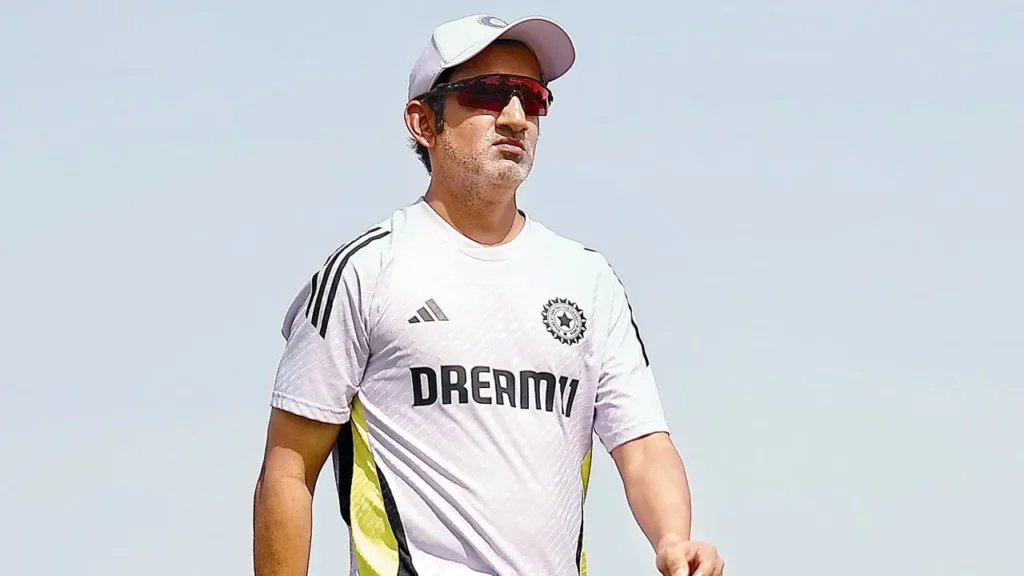
As India gears up for the much-anticipated Test series against England, the spotlight is not just on the performance but also on the fresh leadership and inspiring comeback stories within the team. Former cricketer and current mentor Gautam Gambhir took a moment to address the squad, emphasizing the qualities that make this team formidable and hungry for success. Leadership Transition: A New Era Begins In a significant shift for Indian cricket, Shubman Gill has been appointed as the captain of the Test team, with Rishabh Pant stepping in as the vice-captain. Speaking about this change, Gautam Gambhir said: “I want to congratulate Shubman as well—captain for the first time. There is no bigger honour than leading your country’s Test team.” Gambhir highlighted the responsibility and pride that come with the captaincy. At just 25 years old, Gill’s promotion marks a bold move by the selectors and a signal of trust in the next generation. His calm demeanor, technical prowess, and temperament have already been well-noted, but leading a Test team brings a whole new level of challenge and scrutiny. Addressing Pant’s role as vice-captain, Gambhir added: “Congratulations to Rishabh Pant as well, who is part of the leadership group now. It’s a well-deserved recognition of his character and fighting spirit.” Pant’s return from a life-threatening car accident to reclaim a leadership position is a testament to his resilience and determination. His inclusion not only boosts the team’s morale but also adds a fearless and instinctive mind to the leadership panel. Karun Nair: The Return of a Fighter One of the most heartwarming stories ahead of the England series is the return of Karun Nair to the Test squad. Once hailed as a future mainstay after his memorable triple century in 2016, Nair’s career took an unexpected detour. Despite scoring heavily in domestic cricket, he remained on the sidelines for several years. But now, after a seven-year hiatus, he’s back in the Indian squad. Gambhir applauded his mental strength and relentless pursuit of excellence: “Comebacks are never easy, especially after such a long gap. Karun is someone who has made a comeback after seven years. He had a phenomenal last season, and most importantly, showed that never-say-die attitude that got him back into the team.” Gambhir stressed that Karun’s journey is not just about numbers but about the inspiration he provides to younger cricketers. His story reflects perseverance, humility, and an undying hunger to perform, which resonates strongly with the current group of players. Team Culture: Building Around Hunger and Grit Reflecting on the mood within the camp, Gambhir shared his observations: “When I look around in this group, I see hunger. I see fire. That’s what makes teams dangerous.” He emphasized that it’s not just about talent, but about the collective desire to win and to keep evolving. The Indian team, especially in red-ball cricket, has always prided itself on character and endurance, and Gambhir believes this squad continues that tradition. The presence of young blood, along with experienced campaigners, has created a dynamic balance within the squad. Players like Yashasvi Jaiswal, Sarfaraz Khan, and Rajat Patidar bring fresh energy, while the likes of Ravindra Jadeja, Mohammed Shami, and Jasprit Bumrah offer a solid backbone. The England Challenge: A Test of Skill and Spirit Facing England in a Test series is never an easy task. Their attacking “Bazball” approach, under coach Brendon McCullum and captain Ben Stokes, has redefined Test cricket over the last two years. India will need to counter this aggressive style with discipline, strategy, and adaptability. However, Gambhir believes this squad is well-equipped: “This team has the mix, the leadership, and the mindset to take on any challenge. Whether it’s playing on rank turners or flat decks, they know what’s expected.” He particularly noted the importance of seizing crucial moments—a factor that often decides the outcome in closely contested series. Looking Ahead: The Bigger Picture While the immediate focus is on the England series, Gambhir hinted at the broader vision the selectors and management have in mind. With the World Test Championship cycle ongoing and the next final looming, building a stable, battle-hardened core is crucial. Promoting leaders like Gill and Pant, and welcoming back players like Karun Nair, aligns with this long-term planning. “We’re not just building a team for one series; we’re shaping a legacy for the next 5–10 years.” Inspiration, Identity, and Intent As India takes the field against England, the narrative goes beyond just the bat and ball. It’s a story of new beginnings, comebacks, and a collective drive to succeed. The leadership of Shubman Gill and Rishabh Pant, supported by veterans and revitalized by returnees like Karun Nair, forms the crux of a team that’s hungry, proud, and ready to fight. With a series of high-stakes matches ahead, fans can expect not just cricketing excellence but also emotional moments that define the spirit of Indian Test cricket. As Gambhir rightly said, “When I look around in this group, I see hunger”—and it is this hunger that could very well define the series.
Back-to-Back Champion: Brownell Clinches Another 1600m Title
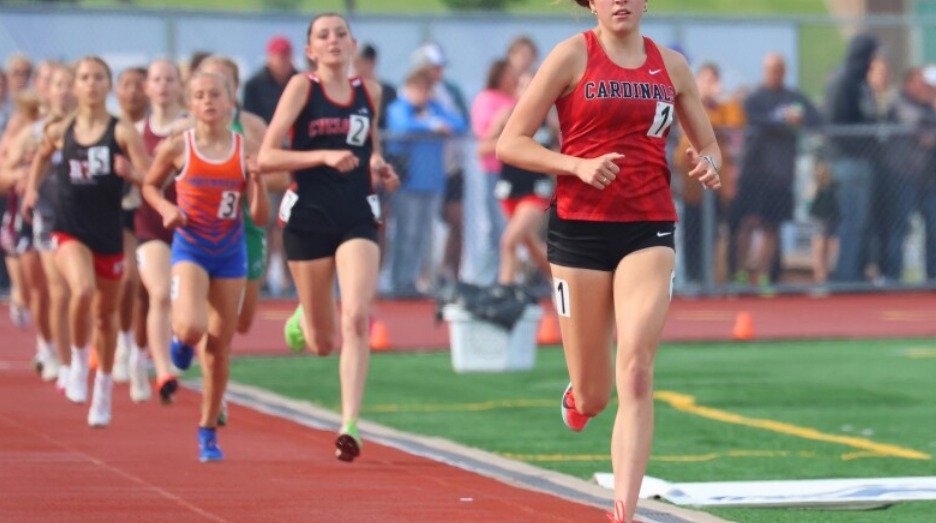
In a remarkable display of endurance, strategy, and determination, S-M High School’s standout runner, Brownell, captured the 1600-meter run title for the second consecutive year at the state-level track and field championships. The victory cements Brownell’s status as one of the top distance runners in the region and highlights a season filled with consistency, grit, and an unwavering focus on excellence. A Repeat Performance Under Pressure Defending a title is often more difficult than winning it the first time, and Brownell knew it. With competitors closely studying his race strategies and a growing target on his back, the pressure was higher this season. Still, Brownell remained calm and collected under the spotlight, executing a near-perfect race plan. He crossed the finish line in 4 minutes, 21.78 seconds, just a fraction of a second ahead of his closest rival, a senior from a rival district known for his strong finishing kick. The race was tight from the outset, with the top four runners separated by less than two seconds. Brownell took the lead midway through the third lap and held off a strong final-lap challenge to win by half a stride. Strategic Racing and Mental Toughness What separated Brownell from the pack was more than just physical preparation. According to his coach, Coach Williams, Brownell has developed a reputation for being a “student of the sport.” He meticulously studies his competitors’ pacing and adapts his race strategy based on what he sees unfolding on the track. “Brownell doesn’t just run hard—he runs smart,” said Coach Williams. “He knows when to surge, when to conserve, and how to win even when the odds look stacked against him.” During the race, Brownell stayed tucked behind the lead runner for the first 800 meters, conserving energy and keeping a close watch. He made his move at the 1100-meter mark, gradually accelerating and forcing the others to match his pace. Only one runner could respond, but Brownell’s final 200 meters—run in under 30 seconds—was too strong to counter. A Season of Consistency Brownell’s road to the championship was paved with consistent performances throughout the spring. He won every 1600-meter race he entered this season, often finishing well ahead of the competition. His personal best this year—4:17.12, set at the regional meet—ranks among the top times in the state. Aside from the 1600, Brownell also competed in the 800m and the 3200m throughout the season, showing off his range as a middle-distance and long-distance athlete. But it’s the 1600m where he has truly made his mark. “He’s got that rare combination of speed and stamina,” said teammate Jason Reed. “Most guys have one or the other, but Brownell has both. He pushes us every day in practice.” Balancing Academics and Athletics Off the track, Brownell is just as impressive. A high-performing student with a GPA of 3.9, he’s heavily involved in school clubs and volunteers at local community events. He credits his time management and discipline for being able to balance academics and athletics successfully. “My schedule is packed, but I try to stay organized,” Brownell said after the race. “When you’re passionate about what you’re doing, whether it’s school or running, it’s easier to stay motivated.” Looking Ahead: Collegiate Goals and Bigger Dreams With two state championships now under his belt, Brownell is already drawing interest from top collegiate programs across the country. Coaches from Division I schools were seen at the meet taking notes, and Brownell hinted that he’s started the college recruitment process. “I’ve had some conversations,” he said. “But right now, I’m focused on finishing my high school career strong.” He still has one more season of high school track and field ahead, and if his current trajectory continues, Brownell could make a serious bid for the state record next year.
Collectors Have the Chance to Own This Historic UFC Card
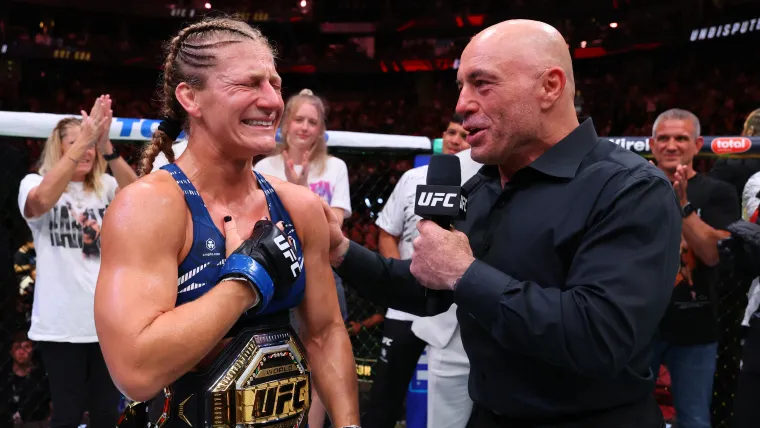
Kayla Harrison’s UFC Legacy Begins at UFC 316 In what can only be described as a spectacular performance at UFC 316, Kayla Harrison solidified her place in mixed martial arts history. With a flawless display of skill, power, and precision, Harrison emerged victorious and claimed the UFC Women’s Bantamweight Championship. Her dominant submission victory sent shockwaves through the MMA world, reaffirming her status not only as the new champion but also as one of the most formidable female fighters on the planet. Her journey from Olympic gold medalist in judo to elite MMA athlete has been nothing short of inspirational. UFC 316 wasn’t just another fight night—it was the night that changed the trajectory of her career and, arguably, the women’s bantamweight division itself. A Moment Immortalized in Cardboard: The First Champion UFC Card Following her groundbreaking win, UFC collectibles have reached a new level of significance. For the first time ever, Kayla Harrison will feature on an official UFC trading card as the reigning bantamweight champion. This isn’t just another addition to the UFC card lineup—it’s a collector’s item destined to become a treasured piece of MMA history. The card marks a pivotal moment in both her career and the UFC’s trading card legacy. Featuring her as champion, the card showcases her iconic pose after the win, symbolizing power, triumph, and legacy. As fans and collectors clamor to get their hands on it, the buzz surrounding this card is palpable. Why This Card Is Already Considered a Collector’s Gem In the world of sports memorabilia, timing and context matter. Kayla Harrison’s card enters the scene just as her popularity and dominance are soaring. The rarity of a debut champion card, especially one linked to such a decisive victory, makes it an instant classic. Collectors recognize the value of milestone moments—first championship wins, breakout performances, and legacy-defining achievements. This card encapsulates all three. For fans of MMA, UFC collectors, and investors in sports memorabilia, this card represents a unique opportunity to own a tangible piece of a historic sports moment. The Rise of Kayla Harrison: A Career of Dominance Before stepping into the UFC octagon, Harrison had already built a reputation as a fierce competitor. As a two-time Olympic gold medalist in judo and an undefeated fighter in the PFL (Professional Fighters League), she had all the credentials of a future star. However, many wondered if she could replicate her dominance on the biggest MMA stage—the UFC. Her performance at UFC 316 answered that question with a resounding yes. She dismantled a highly experienced opponent with tactical brilliance and raw strength, finishing the fight via submission in the second round. That win not only earned her the championship belt but also silenced doubters and opened the door to superstardom. UFC Trading Cards: A Growing Arena for Collectors In recent years, UFC trading cards have gained significant traction among sports card enthusiasts. As MMA continues to grow globally, so does interest in memorabilia associated with its top stars. With stars like Conor McGregor, Khabib Nurmagomedov, and Jon Jones already commanding high value in the trading card market, Harrison’s new card joins an elite club. This specific card is even more special because it captures a “first”—her first appearance as a champion. Cards like these often appreciate in value quickly, especially when linked to fighters whose careers are on a meteoric rise. How to Get the Card and Why Timing Matters For those looking to add this historic item to their collection, timing is crucial. Limited edition prints, especially with holographic or autographed versions, are expected to sell out quickly. UFC has partnered with leading trading card brands such as Panini to release high-quality versions, including rare parallels and signature series. Enthusiasts are advised to pre-order or act swiftly once the cards hit shelves and online platforms. Based on current trends and the growing demand for MMA memorabilia, this card could become one of the most sought-after UFC collectibles of the year. Harrison’s Future and the Card’s Long-Term Value If UFC 316 is any indication, Kayla Harrison’s championship reign might just be beginning. With potential blockbuster matchups on the horizon, including possible cross-division bouts and even superfights, her star power is expected to continue rising. As she continues to build her legacy, the value of this debut champion card could skyrocket. Historical precedence in sports trading shows that early career championship cards—especially first-edition ones—tend to appreciate as the athlete’s accolades pile up. A Must-Have for Every MMA Collector Kayla Harrison’s win at UFC 316 isn’t just a moment in sports—it’s a defining point in MMA history. Her first UFC trading card as champion immortalizes that achievement and offers fans and collectors a rare piece of memorabilia. Whether you’re a hardcore UFC enthusiast, a seasoned trading card collector, or someone who simply appreciates landmark sports moments, this card represents the perfect blend of athletic greatness and collector value. Don’t miss your chance to own a piece of MMA history—this is more than a card; it’s a celebration of a champion’s rise.
